You can use table salt or sea salt as a natural flea killer by sprinkling it evenly across carpets and upholstery, then brushing it deep into fibers. The salt acts as a desiccant, dehydrating adult fleas within 12-48 hours by stripping moisture from their bodies. However, keep pets away from treated areas to prevent salt ingestion, and remember that salt won’t kill flea eggs or larvae. Below, you’ll discover detailed application techniques and safety measures.
How Salt Kills Fleas Through Dehydration
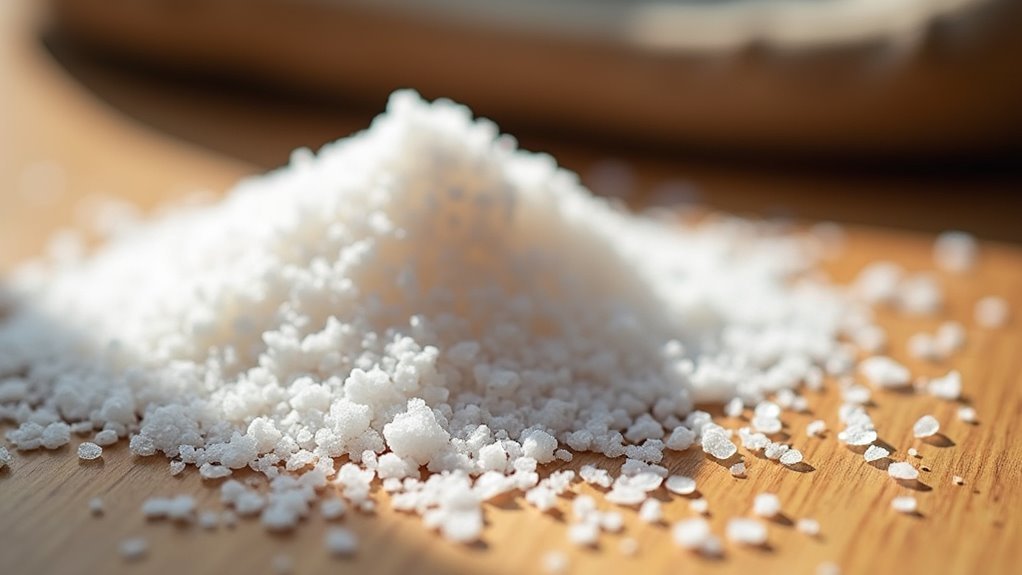
Salt attacks fleas by acting as a powerful desiccant that strips moisture from their bodies. When you apply salt to areas where fleas live, it penetrates their exoskeleton and disrupts their ability to retain water. This dehydration process effectively kills adult fleas on your pets and in your home.
Both finely ground refined salt and sea salt work equally well for this purpose. The salt’s moisture-absorbing properties target the fleas’ water balance, causing fatal dehydration.
However, you’ll notice that salt doesn’t affect flea eggs and larvae, which limits its overall effectiveness. While salt can kill adult fleas through dehydration, it won’t eliminate the complete flea life cycle, meaning new fleas will continue emerging from unaffected eggs.
Types of Salt Effective Against Fleas
You’ll find that both table salt and sea salt work effectively against fleas, though each offers distinct advantages for your pest control efforts.
Regular table salt’s fine texture allows it to penetrate carpet fibers more easily, while sea salt’s coarser grains provide enhanced abrasive action against flea exoskeletons.
Both types share the same dehydrating properties that make salt an effective natural flea treatment for your home.
Table Salt Effectiveness
When choosing the right type of salt for flea control, you’ll find that both finely ground refined table salt and sea salt work effectively as natural desiccants. Table salt penetrates flea exoskeletons and absorbs moisture from their bodies, causing death through dehydration. This makes it one of the more accessible home remedies for pet owners seeking chemical-free solutions.
However, table salt’s effectiveness has limitations for thorough flea control. While it can kill adult fleas efficiently, it won’t eliminate eggs or larvae, which means you’re only addressing part of the problem.
For effective flea management, you’ll need to apply salt generously and brush it deep into carpet fibers where adult fleas hide. Remember that excessive salt poses risks to pet health if ingested, so restrict your pets’ access during treatment.
Sea Salt Benefits
The mineral richness of sea salt gives it a slight advantage over regular table salt in flea control applications.
Like other salt types, sea salt functions as one of nature’s effective desiccants, drawing moisture from fleas’ bodies and causing fatal dehydration.
You’ll find sea salt particularly effective against adult fleas since it can penetrate their exoskeleton structure.
Sprinkle finely ground sea salt evenly across infested carpets, upholstery, and pet bedding areas.
Let it sit for 12-48 hours to maximize contact time with flea populations.
The salt’s dehydrating action works continuously during this period, weakening and killing adult fleas on contact.
After treatment, thorough vacuuming removes dead fleas and salt residue, preparing the area for follow-up treatments if needed.
Proper Application Methods for Salt Treatment

When you’re ready to treat your pet’s flea problem with salt, you’ll need to master the right application techniques to guarantee success.
Proper coverage and timing aren’t just important—they’re essential for eliminating fleas effectively while keeping your pets safe.
Let’s explore how to apply salt correctly and determine the best treatment duration for maximum results.
Salt Application Techniques
Five essential steps will guarantee you achieve maximum effectiveness when applying salt as a flea treatment in your home.
First, sprinkle salt evenly across your carpets and upholstery, ensuring complete coverage of flea-infested areas.
Next, brush the salt deep into carpet fibers using a stiff brush, reaching hidden fleas and larvae.
Allow the salt to remain undisturbed for 12-48 hours, giving it sufficient time to dehydrate the flea population.
After treatment, vacuum thoroughly to remove dead fleas, eggs, and excess salt from all treated surfaces.
Finally, keep your pets away from salted areas during the entire process to prevent accidental ingestion and potential health complications.
Treatment Duration Guidelines
Understanding ideal timing guarantees your salt treatment achieves maximum flea elimination while protecting your pet’s health.
When using salt to kill fleas, maintain the treatment duration between 12-48 hours for best results. This timeframe allows salt to effectively dehydrate adult fleas and disrupt their life cycle. You’ll need to restrict your pet’s access to salted areas during this period, preventing potential skin irritation or ingestion concerns that could affect your pet’s skin health.
After completing the treatment duration, vacuum the salted areas thoroughly to remove dead fleas, eggs, and salt residue. This step’s essential for preventing recontamination and ensuring your home’s cleanliness.
Monitor your pet regularly following treatment, checking for signs of recurring flea infestations to maintain long-term control.
Safety Precautions When Using Salt Around Pets
Although salt can help eliminate fleas from your home, you must take essential safety precautions to protect your pet’s health.
When using salt for flea control, you’ll need to contemplate several health risks that could affect your pets:
- Prevent salt ingestion – Keep treated areas inaccessible to your pets, as they may lick or consume salt, leading to hypernatremia with symptoms like vomiting, seizures, and kidney damage.
- Monitor for skin irritation – Salt can damage your pet’s protective skin barrier, causing dryness and discomfort, especially with large amounts.
- Watch for adverse reactions – Regularly observe your pets for signs of distress or health issues after salt application.
- Use temporarily only – Regard salt a short-term solution while pursuing safer, veterinary-recommended flea control methods.
Duration and Timing for Salt Flea Treatment

When treating your home with salt for flea control, timing becomes critical for both effectiveness and pet safety.
You’ll need to leave salt on treated areas for 12 to 48 hours to effectively dehydrate and kill adult fleas. During this treatment period, keep your pets away from salted areas to prevent ingestion and potential health risks.
Leave salt treatment undisturbed for 12-48 hours while keeping pets away from treated areas to ensure safety and effectiveness.
Don’t touch the salted areas during treatment to avoid spreading salt throughout your home.
After the designated time passes, thorough vacuuming becomes essential to remove dead fleas and salt residue. This creates a cleaner environment and reduces reinfestation chances.
Following your flea treatment, conduct regular checks on your pets for any remaining fleas or ticks to monitor treatment success and catch potential reinfestations early.
Limitations of Salt as a Flea Control Method
While salt shows promise as a natural flea remedy, it carries significant drawbacks that limit its effectiveness as a primary treatment method. You’ll face several challenges when relying solely on salt for flea control.
Key Limitations of Salt Treatment:
- Incomplete Life Cycle Control – Salt only targets adult fleas while leaving flea eggs and larvae untouched, allowing rapid reinfestation to occur.
- Inconsistent Results – You’ll likely experience unpredictable outcomes, leading to frustration and the need for additional treatments.
- Application Challenges – Effective treatment requires generous salt layers, creating messy, labor-intensive applications throughout your home.
- Health Risks to Pets – Excessive salt exposure poses serious health risks, including hypernatremia, which can cause dangerous dehydration in your pets.
These limitations make salt ineffective as a standalone solution for thorough flea control.
Areas of Your Home to Target With Salt
If you decide to use salt despite its limitations, strategic placement becomes essential for any potential success.
Focus on areas where your pets spend most of their time, including carpets, rugs, and furniture where fleas commonly hide. Target high-traffic zones like doorways and hallways where fleas jump off pets and lay eggs.
Prioritize carpets, rugs, and furniture in pet areas, plus high-traffic zones like doorways where fleas drop off and reproduce.
Don’t overlook secluded spots under furniture, beds, and along baseboards where these pests breed undisturbed.
Apply salt directly to pet bedding and crates since these locations provide ideal breeding grounds for fleas.
Remember that salt works slowly, potentially taking days to dehydrate adult fleas.
After treatment, you’ll need to vacuum all treated areas thoroughly to remove dead fleas and prevent reinfestation in your home.
Cleanup and Removal After Salt Treatment
Once you’ve allowed the salt to work for 12 to 48 hours, thorough cleanup becomes your next priority for effective flea control.
Proper cleanup guarantees you remove dead fleas, eggs, and salt residue from your treated surfaces. Here’s your essential cleanup process:
- Vacuum thoroughly – Remove all salt from carpets, upholstery, and cracks where you applied treatment, guaranteeing you capture dead fleas and eggs.
- Dispose of vacuum contents immediately – Empty the bag or canister right after vacuuming salted areas to prevent any surviving fleas from escaping.
- Check your pets – Examine them for remaining fleas and continue monitoring their condition post-treatment.
- Maintain regular vacuuming – Continue frequent vacuuming routines to support ongoing flea control efforts and prevent reinfestation.
When to Consider Professional Flea Control Instead
Sometimes salt treatment and thorough cleanup aren’t enough to eliminate stubborn flea infestations. When home treatments consistently fail, it’s time to contact professional flea control services.
These pest control experts tackle what salt can’t—flea eggs and larvae hiding deep in carpets and furniture.
Severe infestations requiring both indoor and outdoor treatment exceed DIY capabilities. Professional services provide extensive solutions that target all flea life stages simultaneously.
Your vet can also prescribe stronger medications specifically designed for your pets’ needs.
Consider professional intervention when fleas return repeatedly despite your efforts. Experts offer customized treatment plans based on your home’s specific conditions and your pets’ requirements.
Regular professional maintenance prevents future outbreaks, especially in high-flea regions where standard home treatments prove insufficient.
Frequently Asked Questions
Can I Put Salt Directly on My Dog to Kill Fleas?
You shouldn’t put salt directly on your dog to kill fleas. It’s harmful and can cause dehydration, vomiting, and kidney damage if your dog licks it. Use veterinary-approved flea treatments instead.
How Long Does It Take for Salt to Kill Fleas?
Salt takes 12-48 hours to kill fleas after you’ve applied it. You’ll see results within this timeframe as the salt dehydrates adult fleas, but it won’t eliminate eggs or larvae immediately.
Do Baking Soda and Salt Really Kill Fleas?
You’ll find salt can dehydrate adult fleas, but it won’t kill eggs or larvae. Baking soda doesn’t effectively kill fleas at all. Both methods aren’t reliable solutions compared to professional treatments.
Does Table Salt Really Kill Fleas?
Yes, table salt can kill adult fleas by dehydrating them and damaging their exoskeletons. However, you shouldn’t rely on it alone since it doesn’t eliminate eggs or larvae effectively.
In Summary
You’ve learned salt can dehydrate fleas and help control infestations, but it’s not a complete solution. You’ll need to apply it strategically while keeping your pets safe, vacuum thoroughly afterward, and repeat treatments. Don’t expect salt alone to eliminate severe infestations – you might need professional help for persistent problems. Salt works best as part of an all-encompassing flea control strategy that includes treating your pet and maintaining good hygiene.
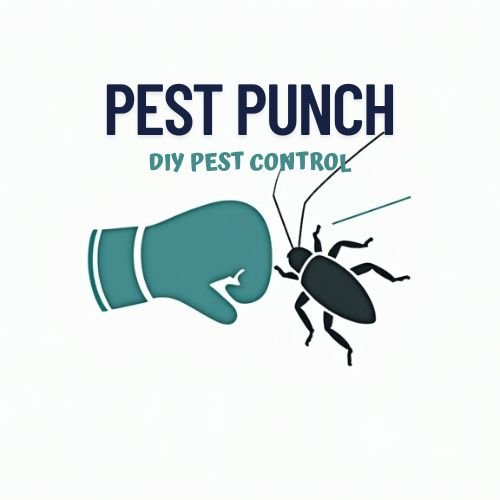

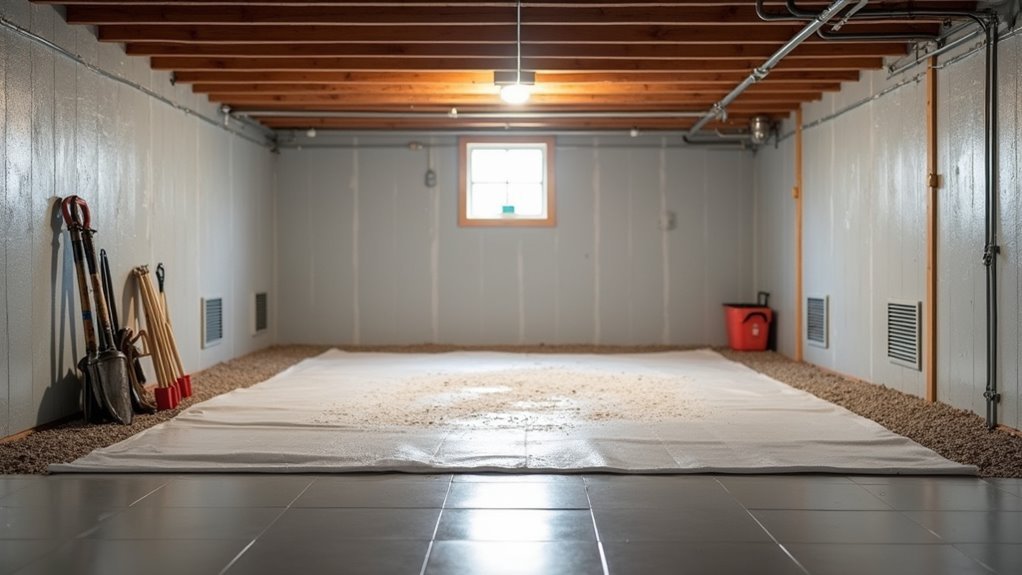
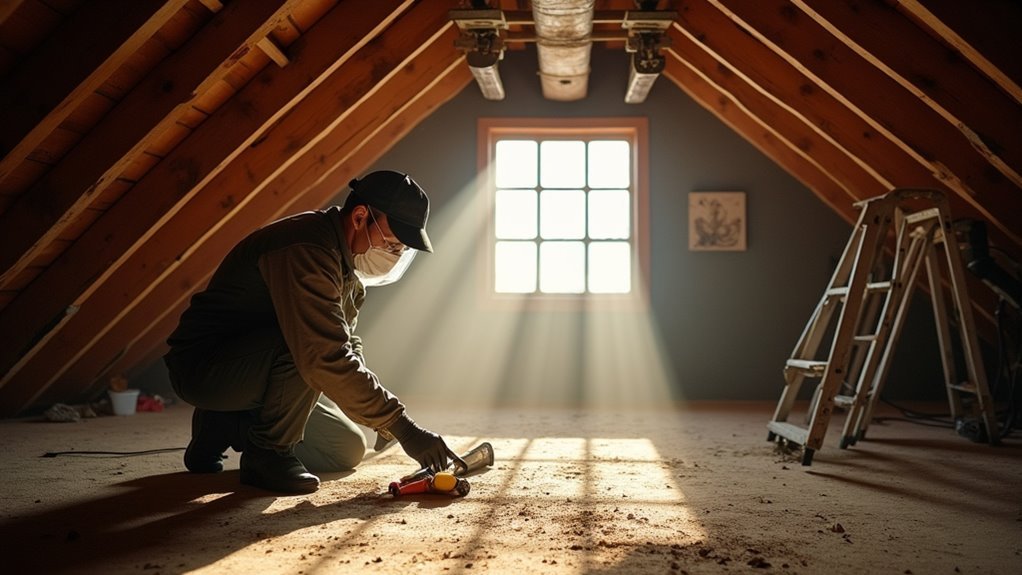
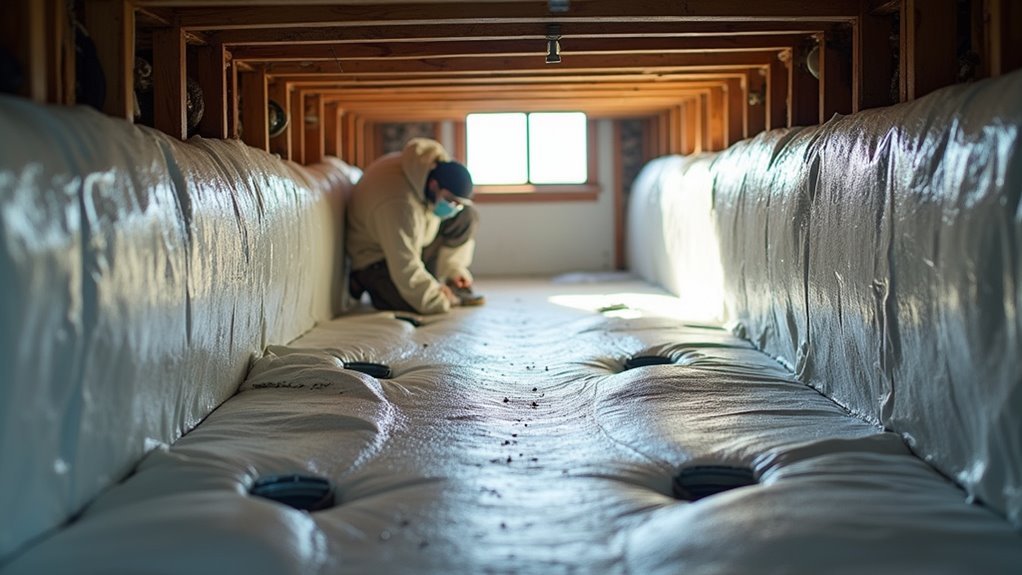
Leave a Reply